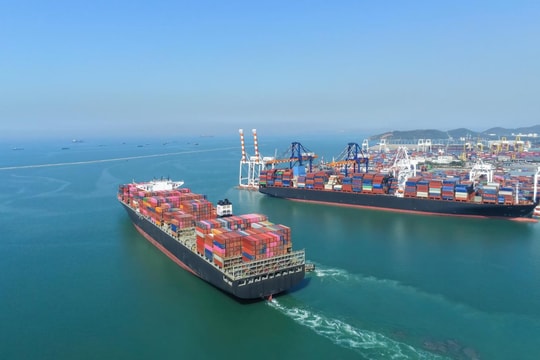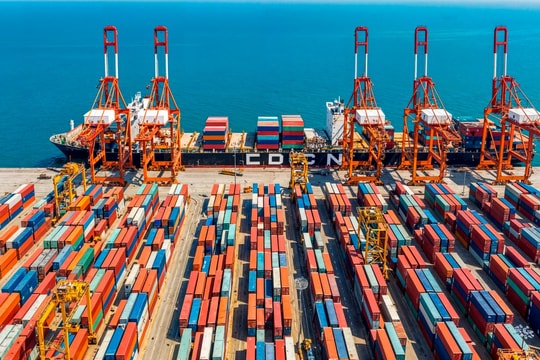Rising Exports, Rising Risks
The year 2024 marked a significant milestone as Vietnam’s share of total U.S. footwear imports reached a record 32% in just the first eight months. This is the result of years of supply chain shifts from China to Vietnam, coupled with the increasing production capacity of Vietnamese enterprises.
However, many experts believe that behind this impressive growth lie substantial risks especially the trade defense measures that the U.S. may implement as trade protectionism gains favor. Under the reciprocal tariff policy reintroduced by President Donald Trump's administration in early 2025, any country that imposes high tariffs on U.S. goods could face equivalent tariffs on their exports to the U.S.

Currently, Vietnam applies an average MFN (Most Favoured Nation) tariff of around 12–20% on some imported footwear products. Previously, Vietnamese footwear exports to the U.S. benefited from preferential or lower tariff rates under the GSP system and other favorable conditions. Thus, if the reciprocal policy is strictly enforced, Vietnamese footwear could be subject to higher tariffs, weakening its competitiveness compared to rivals such as Indonesia, Mexico, and Bangladesh.
The U.S. is also actively reviewing cases related to anti-dumping, countervailing duties, and origin verification to prevent tariff evasion through intermediaries. As the trade surplus between Vietnam and the U.S. continues to widen, the footwear sector is likely to become a “focal point” of attention for U.S. trade authorities.
“Vietnam could face tariff risks from the U.S. as the trade deficit increases. We must diversify markets and avoid overreliance on a few major importers.” –
Mr. Diep Thanh Kiet, Vice Chairman of LEFASO
“Green Barriers” and the Cost of Compliance
Alongside defensive trade measures, the U.S. is promoting a series of new standards on environment, labor rights, and supply chain transparency. These regulations, while framed as protecting consumers and ethical values, in practice place extremely high demands on Vietnamese enterprises.
First are labor standards the U.S. requires proof of no forced or child labor and mandates internationally recognized working conditions. Environmental criteria follow closely, including the use of eco-friendly materials, reductions in greenhouse gas emissions, and comprehensive ESG (Environmental, Social, Governance) strategies.

To meet these demands, Vietnamese footwear firms must invest tens to hundreds of thousands of dollars annually in quality management systems, certification of raw material origins, and environmental assessment tools. These costs are a major obstacle for small and medium enterprises (SMEs), which account for about 80% of Vietnam’s footwear industry.
Beyond financial burdens, complying with new standards also requires skilled human resources, advanced management capabilities, and a proactive mindset toward transformation. This is particularly challenging for companies still reliant on traditional subcontracting models, with limited experience in direct cooperation with global brands.
Regional Competition and Pressure to Transform
While Vietnam grapples with U.S. barriers, ASEAN countries such as Indonesia, Thailand, and especially Mexico (benefiting from the USMCA) are quietly expanding their market shares. These nations began preparing early signing bilateral trade agreements, upgrading production capacity, and investing heavily in digital transformation and ESG compliance.
In fact, some orders from major brands have already shifted from Vietnam to Indonesia due to lower compliance costs and more favorable government support. If improvements are not made quickly, Vietnam risks losing its “global No. 2” position in footwear exports to more agile competitors.
This challenge extends beyond enterprises. Ministries and agencies must also develop technical support mechanisms, legal advisory services, green financing access, and sustainable transition packages to ensure businesses do not fall behind.
Leveraging agreements like CPTPP and EVFTA must be strongly promoted, alongside rapid updates on new U.S. regulations and sustained government-to-government dialogue to avoid punitive tariffs.

Vietnam’s footwear industry is entering a critical phase of deep integration and facing mounting pressure from its key export markets like the U.S. New trade regulations and technical barriers if not quickly recognized and addressed could become major roadblocks to the sector’s sustainable growth.
Nevertheless, challenges are also a test of adaptive capacity. Enterprises willing to transform, invest in green technology, manage ESG effectively, and build transparent supply chains will emerge as winners on the global stage. Conversely, those clinging to short-term subcontracting mindsets risk losing their position in the international supply chain.
Now more than ever, Vietnam’s footwear industry needs a unified action strategy from enterprise level to national policy to overcome barriers and turn challenges into a springboard for long-term breakthroughs.


.jpg)


.jpg)







.png)







.png)